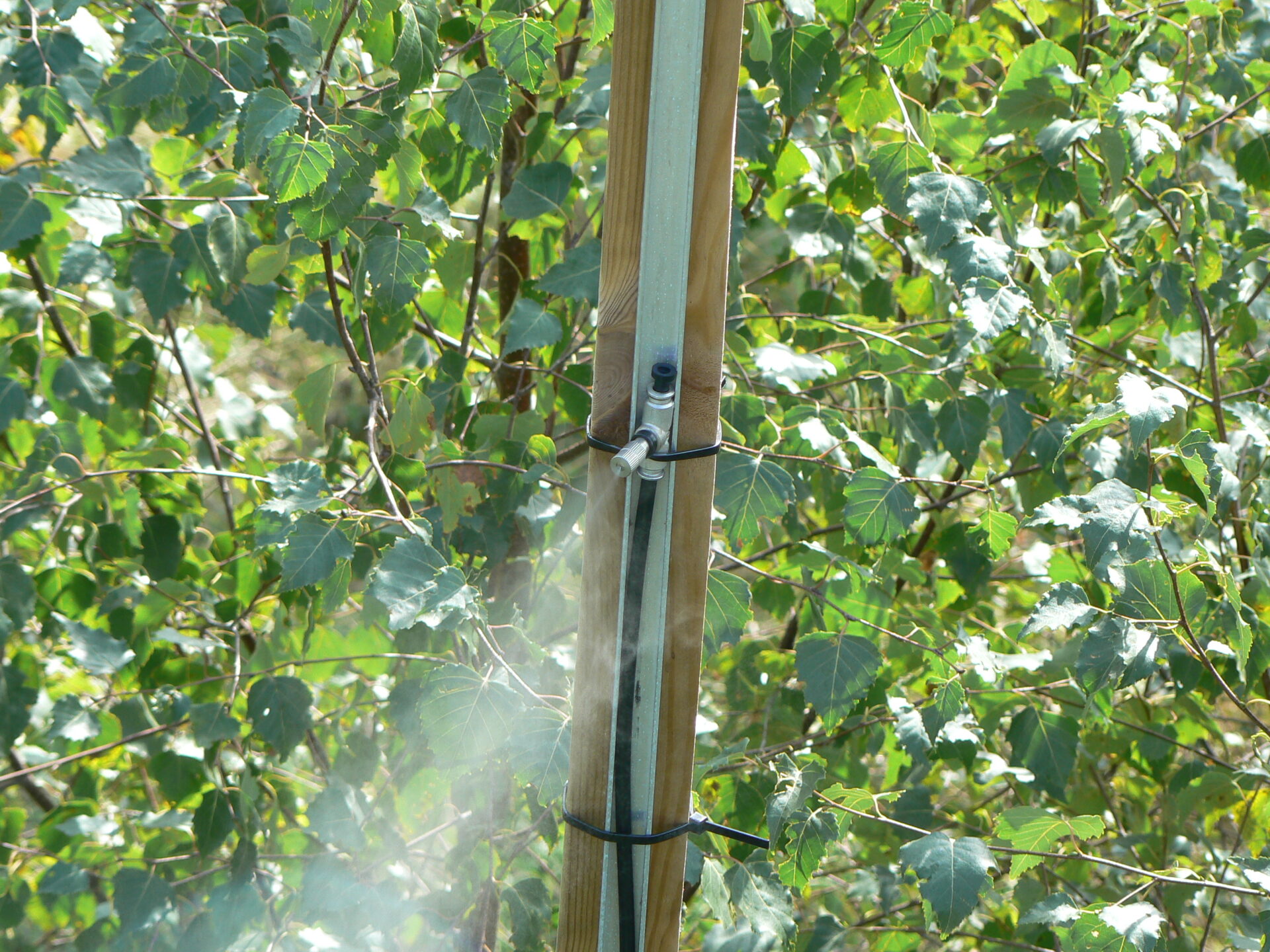
Metsaökosüsteemi õhuniiskusega manipuleerimise eksperiment (Free Air Humidity Manipulation)
Site description
The forest ecosystem experimental site is located within the Järvselja Training and Experimental Forest District in the village of Rõka, Meeksi municipality, Tartu county.
The first steps towards the creation of the experimental site on disused arable land were undertaken in the autumn of 2005, when the fields were ploughed and weeds eradicated. In the spring and autumn of 2006, hybrid aspens were planted on an area of 2.7 ha. The area is fenced and the distance between aspens is two meters. In addition to hybrid aspens, the tree species planted at the site include silver birch, black alder, common aspen, triploid aspen and others to a lesser extent.
The experimental site includes 9 smaller areas or “experimental cells”, where specific air humidity manipulation experiments are conducted. Each experimental cell contains 196 trees, half of which are hybrid aspens and half of which are silver birches. The distance between trees in the experiment area is one meter. Each experimental cell contains two different types of understory (simple and complex). The simple understory is relatively species-poor and mainly consists of timothy-grass and other grasses. The complex understory is richer in species, primarily consisting of meadow plants and forest plants that have been planted in clusters.
Air humidity is artificially increased (in relation to surrounding outer air) in three experimental cells (H1, H2, H3). Soil moisture is increased (15% is added to normal precipitation) in three experimental cells (I1, I2, I3). The other experimental cells (C1, C2, C3) are reference areas, where air humidity and soil moisture is not manipulated. A system consisting of a ventilator, air distribution pipes, a high pressure pump and water spray nozzles is used to increase the relative air humidity within the experimental cells. Water is passed through the nozzles to form a fine mist that is spread throughout the experimental cell with the help of the wind and by the ventilator. A special computer programme controls the influx of moist air in the experimental cells. The computer programme guides the operation of air distribution valves in response to the speed and direction of the wind and the humidity level of the “outer” air.
The main parameters constantly measured and recorded in the experimental cells (9) during the vegetation period include:
1. relative air humidity
2. air temperature
3. wind direction and speed
4. soil water potential (at a depth of 15 and 30 cm)
5. soil temperature (at a depth of 15 and 30 cm)
6. photosynthetically active radiation
7. precipitation
The environmental parameters are measured in 3-9 replications in each experimental cell. Windspeed and direction are only measured in those cells, where the air humidity is artificially manipulated. Since 2006, an automated weather station is located at the Rõka experimental site.



